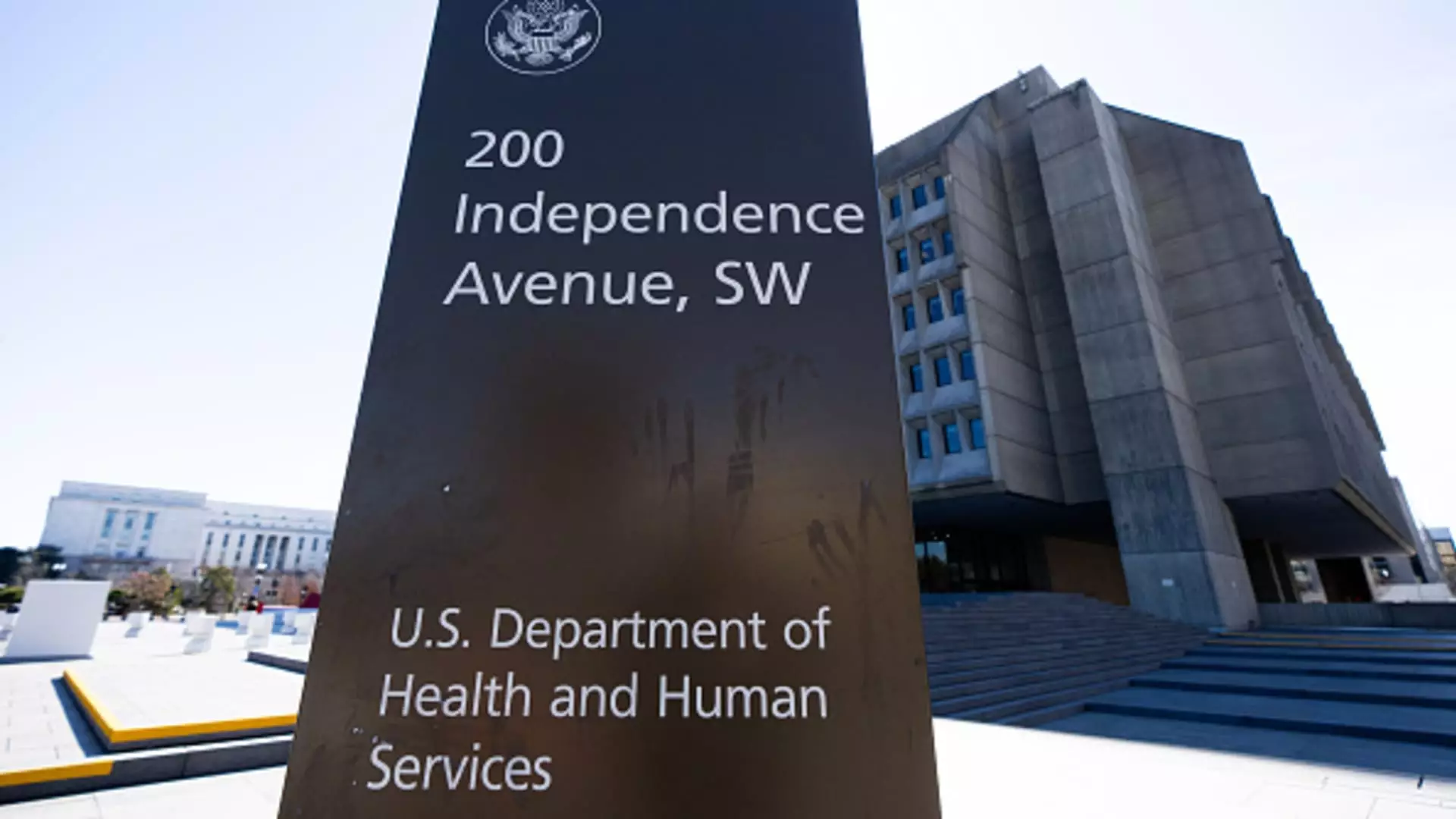The recent announcement from the U.S. Department of Health and Human Services (HHS) is nothing short of alarming. An impending layoff forecast suggests that up to 10,000 employees will lose their jobs amidst a radical restructuring strategy. These cuts are not just numbers on a spreadsheet; they represent critical personnel responsible for maintaining health safety nets essential for millions of Americans. The situation carries an unsettling implication of jeopardizing public health at a time when the nation can hardly afford to compromise on its medical systems.
This restructuring follows President Donald Trump’s controversial executive order aimed explicitly at dismantling collective bargaining rights across several federal agencies, including HHS. As the lines of accountability and welfare provision blur, Secretary of Health Robert F. Kennedy Jr. openly critiqued the agency as a “sprawling bureaucracy” that has failed to utilize its tremendous budget of $1.7 trillion effectively. Such rhetoric will undoubtedly resonate with a segment of the population concerned about governmental efficiency, yet it raises an essential question: are we sacrificing quality and safety for the sake of supposed efficiency?
The Human Cost of Restructuring
What truly grates at the heart of this overhaul is the human cost. Workers involved in vital public health functions, from managing infectious disease outbreaks to overseeing food and drug safety standards, now face uncertain futures. The numbers are staggering: 3,500 jobs will be axed from the Food and Drug Administration, 2,400 from the Centers for Disease Control and Prevention, 1,200 from the National Institutes of Health, and 300 from the Centers for Medicare and Medicaid Services. Each position reflects years of training and commitment to public service, dismantling a team that once fostered the well-being of a nation.
This is not merely an economic issue; it’s a moral one. For every affected employee, there is a family, a community, and in many instances, a patient waiting for healthcare services. The foresight or lack thereof in these decisions is shocking, especially when public health agencies have already been stretched thin by recent crises, including the COVID-19 pandemic. The correlation between reduced workforce and compromised public health outcomes is evident; complacency is detrimental when infectious diseases, like the ongoing measles outbreak, remain at large.
A Recipe for a Public Health Disaster
Senator Patty Murray’s warning that these cuts would create a fragile public health framework cannot be overstated. Perhaps more stunning is the speed with which jobs are being eliminated, echoing a sense of urgency fueled more by ideology than a genuine understanding of public health needs. As she put it, if the federal government continues down this path, “they may as well be renaming it the Department of Disease,” illustrating an ironic twist in prioritizing financial gains over the welfare of citizens.
Moreover, the implications extend even beyond federal cuts. State and local health departments are already feeling the repercussions, with several health officials identifying hundreds of positions likely to be slashed due to a sudden lack of funding. Lowered budgets don’t just translate to fewer jobs; they spell disaster in community health outreach efforts, preventive measures, and emergency responses. When a system that safeguards health and lives erodes, it lays the groundwork for a public health crisis waiting to unfold.
The Erosion of Workers’ Rights
Compounding this turmoil is an unambiguous attack on workers’ rights and protections. The stripping away of collective bargaining rights discussed in tandem with layoffs poses a profound threat. This tactic to silence dissent and limit worker protections is alarming, especially when federal employees have been the backbone of critical health work. They have invested in professional growth, fulfilled their responsibilities amidst crises, and now face an existential threat to their livelihoods as political maneuvering cuts through the very foundation of labor rights.
The argument that these cuts will enable HHS to “do more with less,” as touted by Kennedy, lacks empirical support. To disregard decades of expertise and institutional knowledge in pursuit of a leaner bureaucracy is a reckless gamble with the health of not only the workforce but the general populace. The undercurrent of privatization entwined with these layoffs gifts corporations and the more affluent an enhanced stake in public welfare while relegating the government’s role to that of a secondary actor. As a society, we ought to question these choices and confront the implications they bear on health equity.
The reshaping of HHS strips away vital resources amid ongoing health challenges and undermines a trusted public health infrastructure that millions depend on. The winds of change might not signify progress but rather a retreat into an era where the health of the nation becomes yet another commodity, buried under fiscal policy choices devoid of humanity.


Leave a Reply